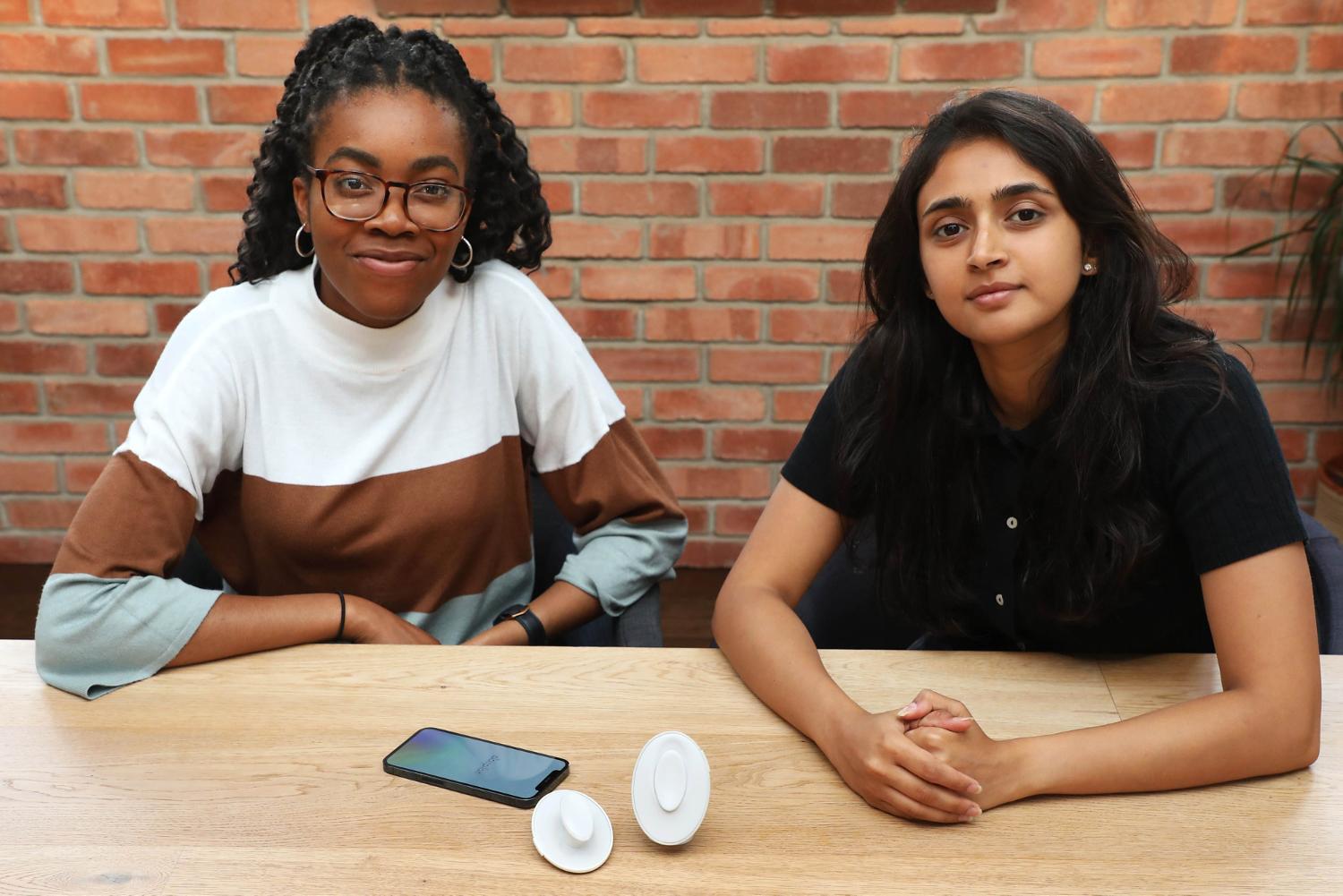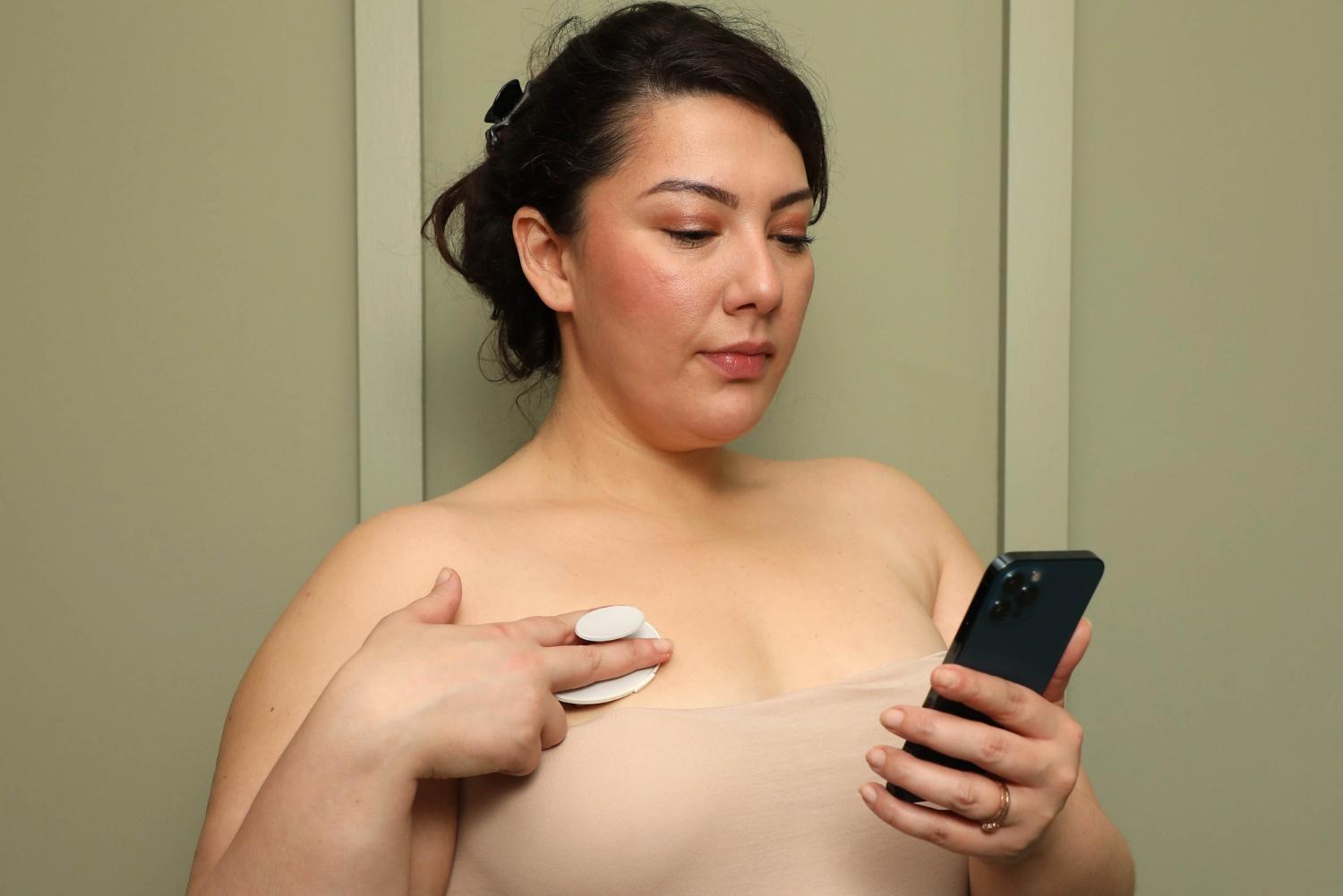-


Bumps or lumps? How two students are trying to beat breast cancer
Winners of the UK James Dyson Award 2022, Debra Babalola and Shefali Bohra, designed a device to assist women in performing monthly breast self-checks to identify any potentially suspicious lumps or abnormalities
September 7 2022
This year’s UK James Dyson Award winner attempts to solve the problems surrounding monthly breast self-checks, to try and promote early detection of any suspicious lumps or abnormalities within the breast tissue.
Breast cancer is a global issue, and last year there were around 11,500 breast cancer deaths in the UK, which is 32 every day1. Breast cancer is currently the 2nd most common cause of cancer death in the UK1. Despite this, many women are failing to perform their monthly checks, with 64% of women aged 18-35 admitting they don’t conduct self-examinations on a regular basis2. However, if breast cancer is detected at the earliest stage almost all women survive1, which highlights that early detection is key.
Recent graduates of Innovation Design Engineering at Imperial College London and the Royal College of Art, Debra Babalola and Shefali Bohra identified through their research that there are lots of different methods and conflicting information advising women to perform self-checks. However, this contradictory information can often lead to women not performing routine checks all together.
The invention
To try and solve these issues, Debra and Shefali created Dotplot, which is an at-home breast health monitoring tool that offers guided self-checks on a monthly basis. It is designed to facilitate the early detection of breast cancer by enabling and encouraging women to stick to a regular breast-self check routine.
The user builds a personalised map of their torso by providing their bra size, breast shape and by sliding the handheld device to rescale the baseline model. Once set up, the app guides women through the self-check by showing which areas they need to scan. A sound signal is emitted to record the tissue composition at each site. The point that the user needs to check flashes on the app until a reading has been taken. Each month's reading is compared to the previously recorded readings to highlight any abnormalities developing in the tissue. Users will be notified if there are any suspicious changes compared to the previous month and advised to visit a healthcare professional for further investigation.
Debra and Shefali estimate that through early detection their device could save hundreds of lives each year. They hope to develop the device further to be able to apply the technology to monitor for other tissue changes, such as those associated with testicular cancer and soft tissue sarcoma.
The Inspiration
Shefali Bohra, one of the Co-Founders of Dotplot, discovered an unusual knot in one of her breasts after a gym workout. She approached a gynaecologist for a clinical breast exam, where a palpation test was performed, and she was advised to monitor the knot using her own fingers for a few months. Fortunately, the knot self-resolved. Using this event as a starting point, Shefali and Debra sought to discover existing tools that routinely assist women in monitoring their breasts. Astonished by the lack of at-home solutions for the early detection of breast cancer, they set their ambitions to build a product to address this need.
They went on to conduct interviews with women who do and do not have a family history of breast cancer to gather key insights on how they currently engage with self-checks. Their research highlighted that even after a nurse or GP demonstrated a self-check, many women were still not certain that they were doing them correctly and current guidance for self-checks is limited to demos, tutorials, and pamphlets. Furthermore, existing scanners and devices have been developed and designed for use within clinical settings and nothing exists to assist women in performing examinations from home. Shefali and Debra were also involved in regular discussions with breast cancer surgeons, radiologists, GPs, and other professionals for scientific validation, technological development and to determine how Dotplot will fit into the medical landscape.
The Prototypes
For the technical development, the team used sound waves to detect lumps within a breast surrogate and found clear differences in readings in areas with and without lumps. The prototype could detect lumps up to 15mm deep. They refined the prototype and used machine learning to sample different lump sizes at different depths.
Future plans
Winning the national leg of the James Dyson Award will inject £5,000 into Dotplot’s project. Debra and Shefali aim to commercialise their invention in the coming years, using the award money for further research and official medical testing into how the invention can become a global solution to at-home breast self-checks and hopefully save lives.
Dotplot will progress to the international stage of the James Dyson Award. The International shortlist will be announced on 12th October, and the International winners on 16th November.

On winning the James Dyson Award, Debra says: “Finding out that we had won the UK National James Dyson Award has been completely surreal. Seeing previous projects that have won the award has been so inspiring for us and winning this really takes us to the next level of our development.
“The goal is for Dotplot to make breast self-checks become routine for women across the globe and to help catch any suspicious changes as soon as possible.”
Shefali says: “We were shocked to discover that there are no products available that can assist women to carry out a breast self-check, so we set ourselves the goal of creating a device that can allow women to perform self-checks with clarity, ease and confidence.
“Winning the James Dyson Award gives us the validation that Dotplot is an idea worth pursuing. You need that motivation at each and every point of product design, especially when you hit a low.”
Dr Frankie Jackson-Spence, Dyson Advocate and Oncologist says: “Knowing how to spot the signs and having the confidence to know when to go to the doctor and get checked out is key to early detection and better outcomes. Debra and Shefali’s creation, Dotplot, is an exciting concept. It could give many women the knowledge and confidence to perform guided self-breast checks regularly and take action when they notice something abnormal and help save lives.
“There’s something empowering about getting to know your body, your own normal and having the confidence to act when you know something isn’t quite right. Dotplot really champions this philosophy and it’s great to see the James Dyson Award recognising young inventors and raising awareness of breast cancer.”

National Runners-Up
-

Harp
Problem: Pumping water consumes 10% of the world's generated electricity, a cost that will double by 2050 due to climate change and population increase.
Solution: HARP is an IoT upgrade to the Hydraulic Ram Pump (HRP). It enables this 18th century technology to integrate with modern water systems by creating the world’s first smart zero-carbon pump.
-
Orca
Problem: Current capsule endoscopes are uncontrollable due to size constraints and limited electrical power.
Solution: ORCA is an origami-structured capsule endoscope that can be passively pushed forward and backward by intestinal peristalsis, enabling effective control of the capsule with little energy.








